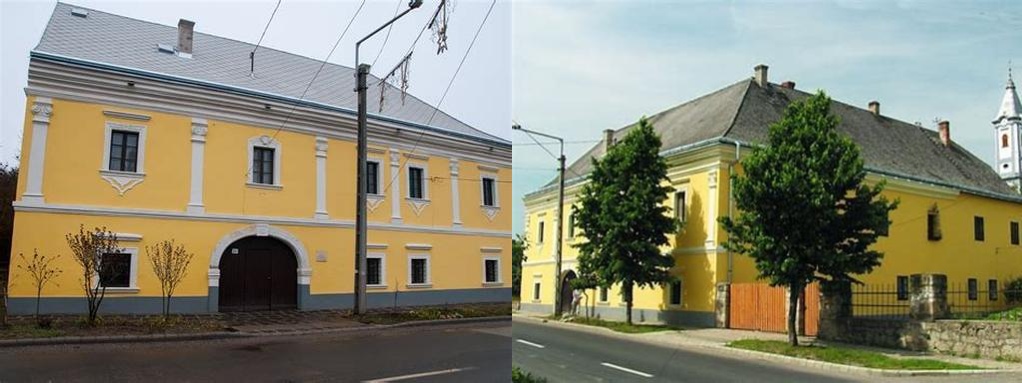
Bodrogkeresztúr, a quiet and idyllic village nestled among the rolling hills of the Tokaj wine region, might seem small at first glance. But here, where the Bodrog River flows lazily and vineyards checker the landscape, hidden treasures await those who like to wander off the beaten path. One such treasure is the Rákóczi-ház (Rákóczi House), a site whose walls have absorbed centuries of history and whose stories have outlived princes and humble winemakers alike.
Walk through Bodrogkeresztúr and it’s hard to miss the Rákóczi House, standing tall with its pale walls and late Baroque character. Its exact date of origin is sometimes debated among local historians, but most agree on the mid-18th century as the era when this gracious manor came into its own. The house is named for its most famous owners, the Rákóczi family, who were among the most influential noble families in Hungarian history. The family name immediately conjures the image of Ferenc II Rákóczi, Prince of Transylvania and leader of Hungary’s heroic but ultimately doomed War of Independence against Habsburg rule (1703–1711). Although Ferenc II himself did not live in this house, the legacy and presence of his lineage can be deeply felt in Bodrogkeresztúr and within these walls. Several family members frequented or lived in this house throughout the 18th and 19th centuries, and for locals, the connection runs deeper than blood and stone—it is a matter of identity.
The house itself stands as a singular example of the shifting social and aesthetic tides that swept across the Hungarian countryside in the 1700s. What first strikes the visitor is its elegant symmetry, the arched windows catching light like attentive eyes. While the exterior hints at a restrained, Baroque manor, it’s inside the Rákóczi House that the past truly begins to whisper. High, vaulted ceilings echo with the footsteps of history, and every wooden beam seems steeped with stories passed from one generation to the next. The robust kitchen fireplace, once the beating heart of domestic life, still stands in silent testimony to festive gatherings and quiet meals alike.
But Rákóczi House is not just a relic frozen in time. Its rooms have hosted secret meetings during turbulent periods in Hungarian history, including the preparations of local noblemen for the aforementioned War of Independence. Even today, historic artifacts and furnishings reveal slices of everyday life from centuries past: painted cabinets, earthenware jugs with intricate floral designs, and heavy, fortress-like doors designed to protect against more than the weather. The old cellars run long and deep—an architectural necessity in a region famed for its wines. Whispers persist that these hallowed, cool passages below the house once sheltered treasures or perhaps even played a part in the clandestine movements of revolutionaries.
Over the years, the Rákóczi House has seen the village and its residents change. After the noble era faded, the manor passed into the hands of wealthy winemakers and bourgeois families who added practical touches but respected the original fabric of the building. The 20th century brought world wars and uncertainty, but the house stoically endured. Recent decades have seen careful restoration, returning many of its rooms to their former grandeur, while ensuring the unique, cozy spirit remains intact. Even an untrained eye can see the delicate balance between preservation and daily function—a challenge for any historical site.
For those with a taste for the art of winemaking, the significance of Rákóczi House extends below ground. The wine cellars, sometimes accessible by guided tours, are quiet marvels. Long, winding, lined with ancient stone, and clothed in the gentle fuzz of noble mold, these cellars are a reminder of the times when the house’s inhabitants produced the golden Tokaji Aszú wine so prized by courts across Europe. It is tempting, in the cool, slightly musty darkness, to imagine conversations between vintners sharing secrets or lords celebrating a newly pressed vintage.
Today, the house is open to curious visitors. It functions as a small museum and community center, a place where schoolchildren’s voices mix with the patient explanations of local guides. Throughout the year, local events—wine tastings, art exhibitions, and concerts—roll through the rooms, drawing together the village and its guests much as the Rákóczi family would have done during their own time. Perhaps the greatest pleasure of a visit is to simply stand in the walled garden and listen to the village, the birdsong, and the echoes of history carried on the breeze.
In Rákóczi-ház, you won’t find extravagant displays or shiny interactive screens. What you will find is something more enduring: a place where the textures of slow history, lived lives, and resilient culture offer a gentler, richer hospitality than any brochure promises. Take your time, look up, and imagine the countless lives that have crossed these thresholds. Cast your mind back to the urgency of revolution or forward to the next village celebration. In Bodrogkeresztúr’s Rákóczi House, you become not just a visitor, but a quiet part of its ongoing story.





